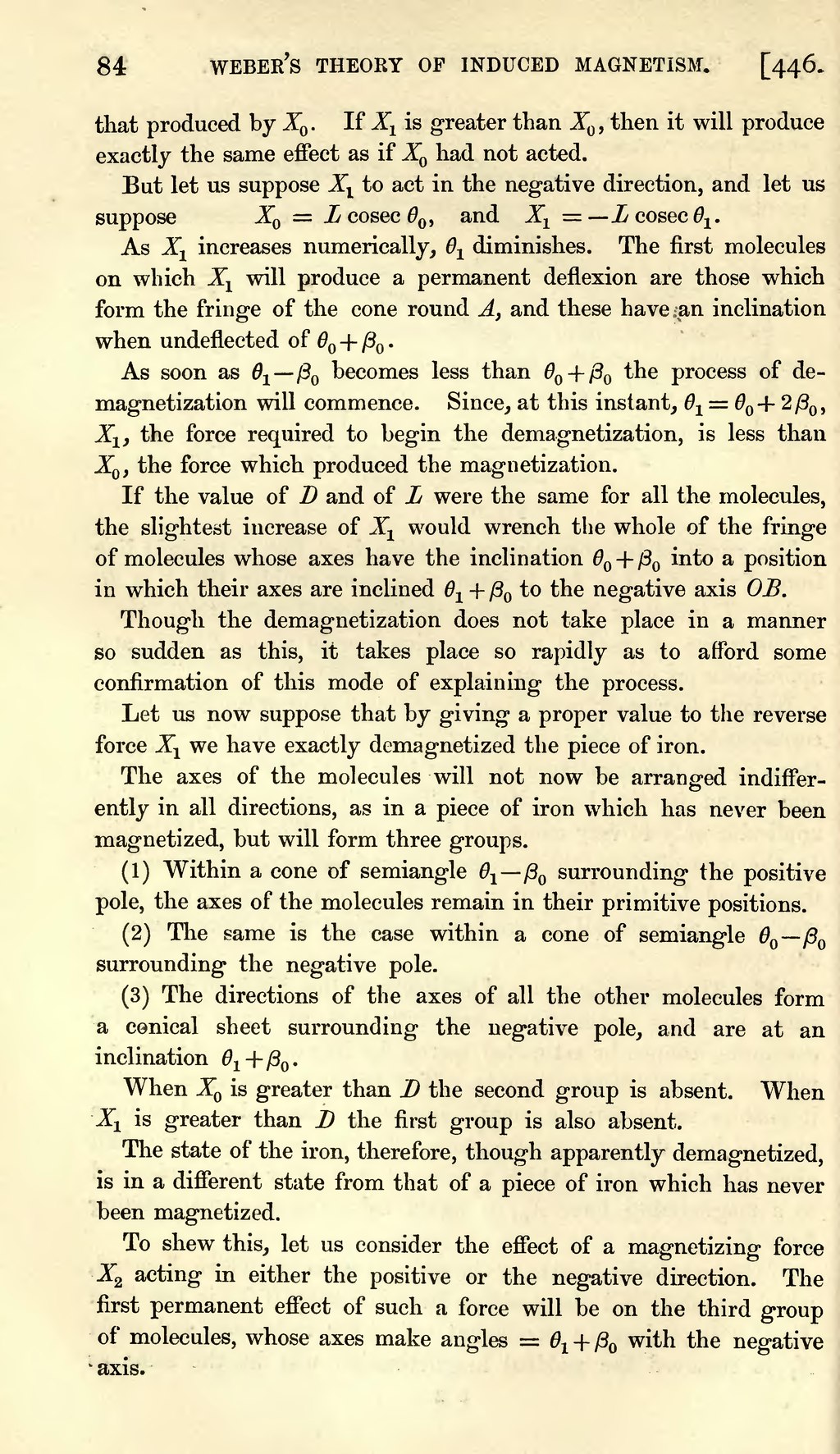that produced by X0. If X1 is greater than X0, then it will produce exactly the same effect as if X0 had not acted.
But let us suppose X1 to act in the negative direction, and let us suppose X0 = Z cosec θ0, and X1 = –L coesc θ0.
As X1 increases numerically, θ1 diminishes. The first molecules on which X1 will produce a permanent deflexion are those which form the fringe of the cone round A, and these have an inclination when undeflected of θ0 + β0.
As soon as θ1 – β0 becomes less than θ0 + β0 the process of demagnetization will commence. Since, at this instant, θ1 = θ0 + 2β0, X1, the force required to begin the demagnetization, is less than XQ, the force which produced the magnetization.
If the value of D and of L were the same for all the molecules, the slightest increase of X1 would wrench the whole of the fringe of molecules whose axes have the inclination θ0 + β0 into a position in which their axes are inclined θ1 + β0 to the negative axis OB.
Though the demagnetization does not take place in a manner so sudden as this, it takes place so rapidly as to afford some confirmation of this mode of explaining the process.
Let us now suppose that by giving a proper value to the reverse force Xl we have exactly demagnetized the piece of iron.
The axes of the molecules will not now be arranged indiffer ently in all directions, as in a piece of iron which has never been magnetized, but will form three groups.
(1) Within a cone of semiangle θ1 – β0 surrounding the positive pole, the axes of the molecules remain in their primitive positions.
(2) The same is the case within a cone of semiangle θ0 – β0 surrounding the negative pole.
(3) The directions of the axes of all the other molecules form a conical sheet surrounding the negative pole, and are at an inclination θ1 + β0.
When X0 is greater than D the second group is absent. When X1 is greater than D the first group is also absent.
The state of the iron, therefore, though apparently demagnetized, is in a different state from that of a piece of iron which has never been magnetized.
To shew this, let us consider the effect of a magnetizing force X2 acting in either the positive or the negative direction. The first permanent effect of such a force will be on the third group of molecules, whose axes make angles = θ1 + β0 with the negative axis.

